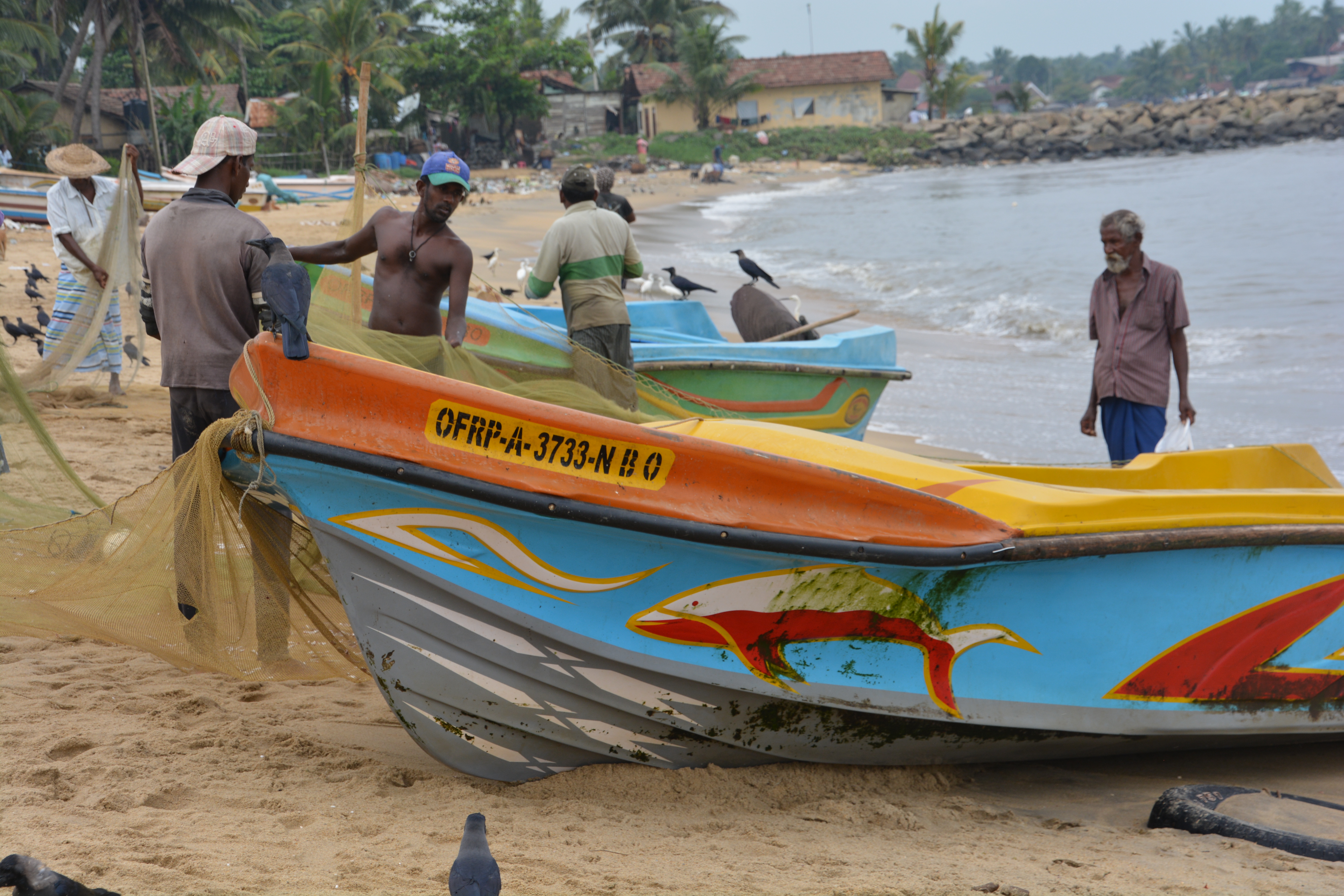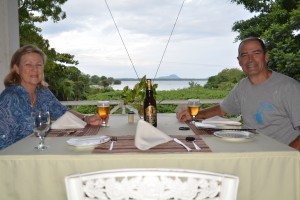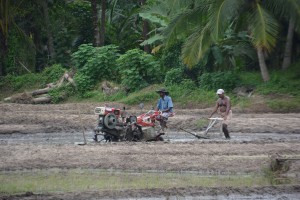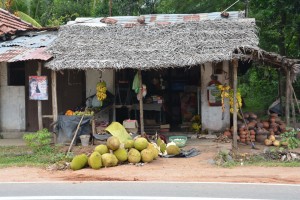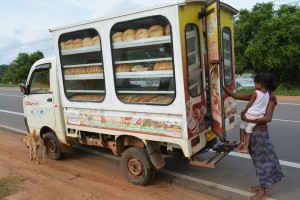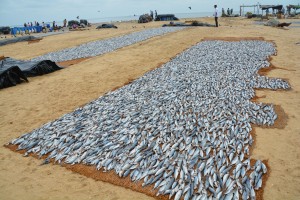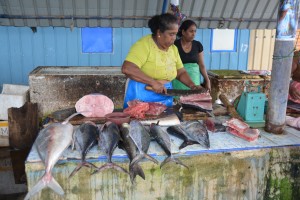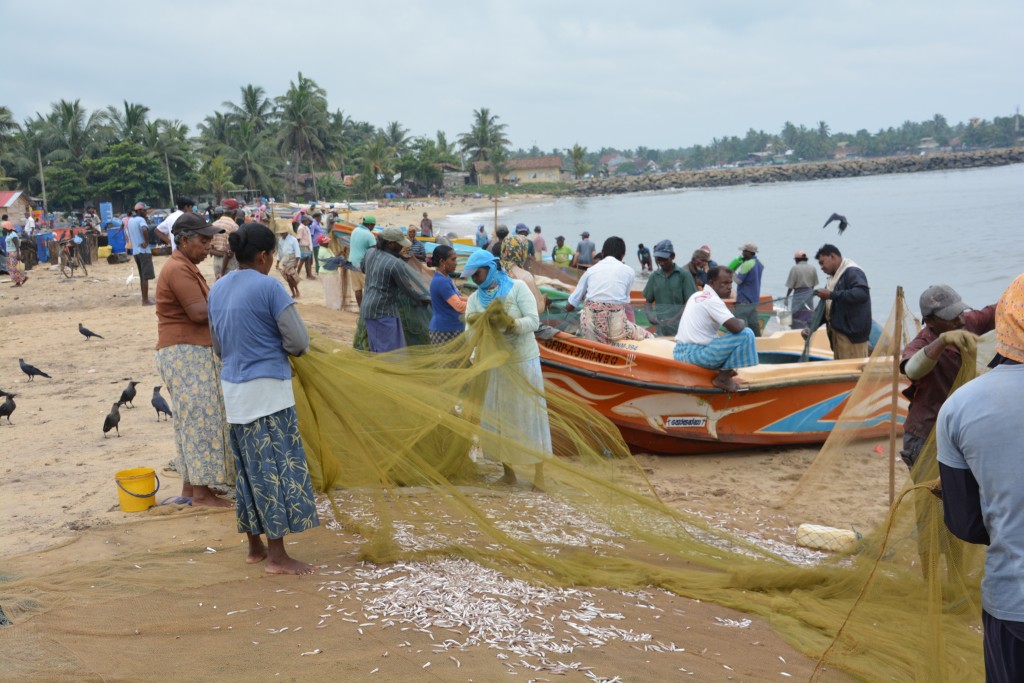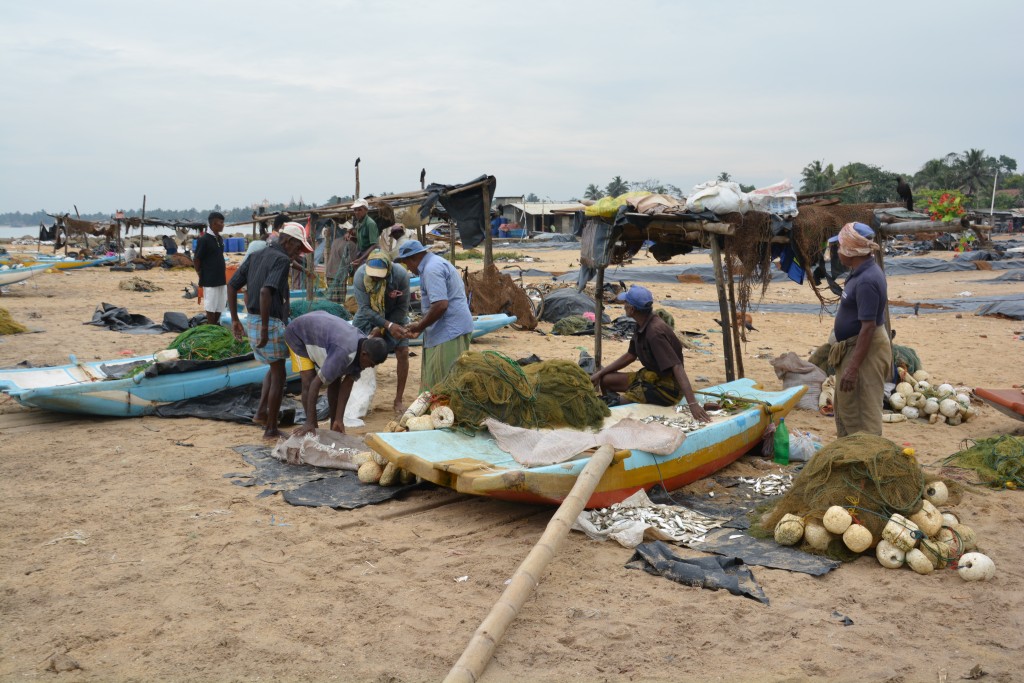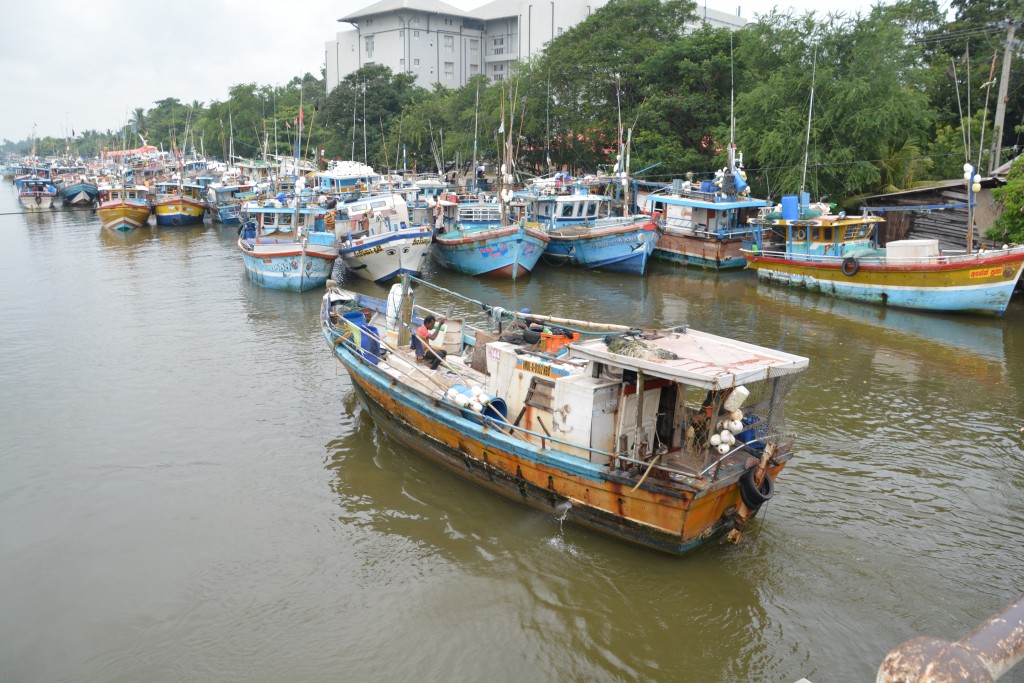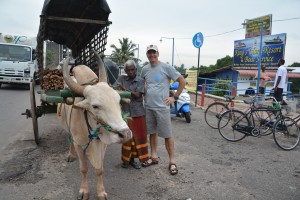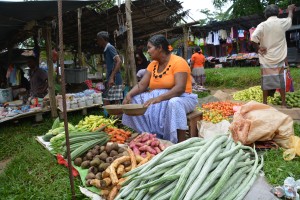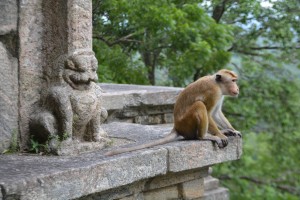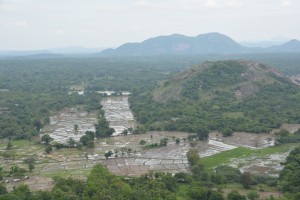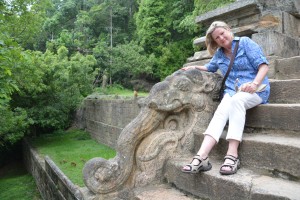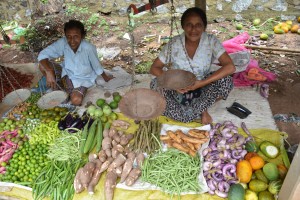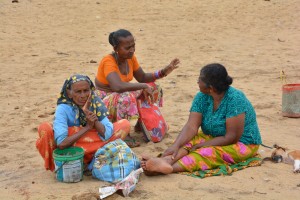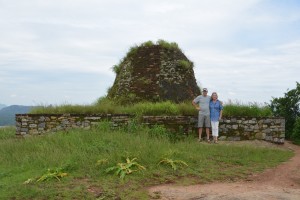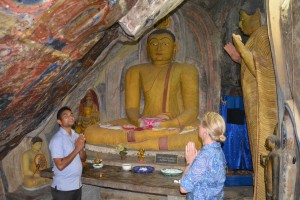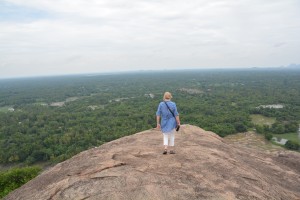Ayubowan!
Ayubowan, this beautiful sounding word was the first we heard when arriving in Sri Lanka on a late night flight from Bangkok. Ayubowan, so say the Sinhalese as a general greeting of good health, a warm hello, peace be with you. With this magic word we could start and finish almost every conversation during 15 fabulous days exploring Sri Lanka. And Sri Lanka deserves exploration for it holds many magical experiences, many beautiful places and many wonderful encounters, all of which told us that despite the recent hard times this country has had it is richly rewarding for all those who venture there.
But hang on, why Sri Lanka? I mean, there are a lot of other places to visit, closer to home, easier to get to, perhaps safer, definitely easier. As a number of friends said to us, “Sri Lanka?” Well, yes, Sri Lanka, we always wanted to go there when we lived in Bangkok but never quite made it. Plus we like visiting the Indian sub-continent, we’re into new experiences and we love curry. Ahhh…that last qualifier did get tested a bit on this trip.
Sri Lanka is the smallish tear-drop shaped island off the south-eastern coast of India which as Ceylon gained its independence from the British in 1948. The Sinhalese majority – almost 70% of the country – is predominantly Buddhist while the northern sections of the island are mainly inhabited by the Hindu Tamils. But the Tamils grew to demand independence and so Sri Lanka endured a divisive and bloody 30 year civil war that crippled the country economically, divided the island’s complex society, saw the death of tens of thousands of soldiers, rebels and innocent civilians and only ended in 2009 with the final defeat of the Tamils.
Since that time, but not without recriminations and many ongoing challenges, the country has slowly been rebuilding itself and trying to catch up with what it lost during those 30 years. And on top of all this, in 2004 the huge Boxing Day Tsunami struck the southern coast of Sri Lanka, killing more than 35,000 people and devastating communities for hundreds of kilometres. Few countries have had the enormous challenges Sri Lanka has endured over recent years and probably no country has rebounded as well as they have.
Our first morning in Sri Lanka was at the fish markets in Negombo, the fishing town north of capital Colombo, where in the early morning boats come in from their overnight and sometimes overweek fishing trips. This was a colourful and busy scene of local fishermen going about their daily grind, meagre catches caught in fraying nets, gritty women in faded worn saris cleaning fish and selling them to locals who come down with a few notes of the local Rupees and an empty plastic bag.
The fish ranged from tiny bait fish to red snappers, barracudas, small tuna, various crabs and a wide assortment of undistinguished and unlucky fish. Primitive scales measured the purchases and haggling for best prices was the order of the day. Strong smells, bright colours, strange sights and foreign sounds filled the morning as we dove back into what life is like for intrepid travellers in Asia. We were in our element.
With this fabulous instant immersion to local Sri Lankan life filling our heads and memory cards we then had a quick gander at the old Dutch fort in Negombo, now a local prison, and at one of the canals built by the Dutch hundreds of years ago. These canals, one of which is 120 kms long, run all over this part of the country and were a key part of the Dutch’s commerce and transport strategy for their fledgling colony. Despite centuries having passed and other colonial powers coming and going these canals still serve much the same purpose today for people in the nearby communities. Very cool.
Our plan for the next 15 days was to do a circle of the key attractions of Sri Lanka, travelling in a clockwise direction from and to the capital Colombo in our comfortable Hyundai Santa Fe with our young and friendly driver whose name was beyond us and we abbreviated to Mr. T. There were four key stages of this trip – the ancient cities, the mountains, the game parks and finally the beaches. For an island this small Sri Lanka packs amazing diversity in things to see and do. And we were going to try to do the lot.
The plan for the first couple of days was to explore the ancient cities of Sri Lanka in the north-central part of the island, places with unpronounceable names, a rich history dating back well before Christ, with well preserved ruins and a fascinating culture.
We headed north along better than expected roads which mostly had wide shoulders that allowed helmeted motor bikes their own space and generally featured well behaved drivers. Speed limits were obeyed, helmets were worn, policemen featured regularly on the side of the road to monitor the drivers and the whole travelling experience was very easy. Mr. T proved to a very safe and fairly conservative driver, no worries in this regard.
We stopped numerous times for photos (and twice to turn around when Mr. T missed a turn) and the scenery was spectacular. It reminded us of drives in Bangladesh but could be anywhere in Asia, the thick green jungle creeping relentlessly down to the edge of the villages, fields and roads, vines growing up fence poles, thick high grass growing wherever it was allowed, tall elegant palm trees creating a canopy above it all. In the ongoing battle of jungle vs. people you couldn’t pick the winner.
The villages that we passed through seemed to be moving at their own pace. Generally people were just going about their business, a few roadside stalls, men in the rice paddies, women working about their modest homes. There were stray dogs everywhere, often laying on the road to take in the hot morning sun. Some villages seem to feature specific items for sale, one for their cane furniture, another for mud bricks or cashew nuts or water buffalo curd, whatever it may be.
The women wore a mixture of elegant colourful saris, modest pants and shirt or an occasional skirt below the knees while some men wore traditional sarongs but usually fashioned western clothes with plastic thongs or sandals. Most villages featured at least one Buddhist temple and children in their school uniforms could be seen playing in their school yards or walking along the side of the road.

Julie starting the long haul up to the temple at Yapahuwa – the steps got steeper and much more obscure
Eventually we made it to the fairly remote place called Yapahuwa, a 13th century temple placed high on a volcanic plug that rose above the flat fields of rice. This huge volcanic rock loomed high above us as we parked the car but in 30 degree heat with very high humidity and a small water bottle we started up the steep ancient steps carved into the rock which were intentionally minimalist to deter attackers.
As we dragged and dripped our way up this steep rocky staircase an amazing view exposed itself behind us. The flat fertile plains of flooded rice paddies and thick green jungle spanned as far as we could see. Still we went up, hanging on to the occasional rusty and rickety hand rail, more likely just huffing and puffing up the carved or crudely built steps.
Eventually we rounded out to the top of the rock and saw the extent of the ancient ruins, including the hairy stupa that had been overgrown by unattended grass. But mostly it was about the views, 360 degrees, a flat fertile plain with rice fields cut painstakingly into the jungle, stunning panorama in all directions, grey clouds staying high and away. It had been hard work to get there and we didn’t smell the same anymore but it was definitely worth the effort.
Back down the steep steps, carefully, and the old caretaker offered to lead us into a locked grotto that featured 500 year old frescos and a gold-painted Buddha. This was very cool stuff, a little cave under a huge overhanging rock painted with religious images from an ancient time and we enjoyed the special moment. Julie asked to take a photo of the old guy and his toothless grin, also finding out he was 71, born four years before Ceylon declared their independence from Britain.
The national dish of Sri Lanka is curry and rice, or as we were told more than once, curry and rice by three every day. So we stopped at a nearby empty hotel for a good curry and rice lunch, including the eight side dishes that made the whole event quite a full meal. Then it was onward to the unpronounceable ancient city capital of Anuradhapura (pronounced like its spelled!).
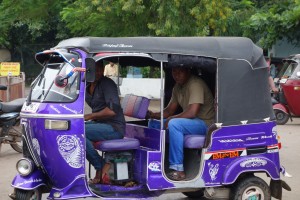
Tuk tuks are everywhere in Sri Lanka, most of them privately owned by families who have moved up from motorbikes
Through its quiet and shady wide streets (Mr. T claimed it was a bit chaotic with its 12 roundabouts!) we found our way to the hotel positioned on a quiet side street away from the action. Cold Lion Lager beers – excellent – and another curry and rice meal were the finishing touches to a long and hot jet lagged day that gave us an outstanding introduction to what we were going to see in Sri Lanka. Ayubowan!
